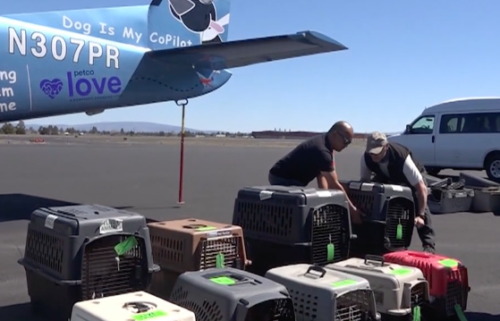Heat wave adds to stress, health risks for C.O. firefighters
(Update: video added)
Crews battling large fires face long days, struggle to stay cool and safe as heat lingers
BEND, Ore. (KTVZ) -- With several large wildfires burning across Central Oregon and more around the state and region, thousands of firefighters are working long, hard hours to encircle and put out fires before weather conditions potentially worsen and winds pick up. And above-average temperatures only add to the health challenges they face.
For Redmond resident and U.S Forest Service firefighter Jared Bandor, fire season is nothing new -- he's currently working his 13th fire season-- but battling a heat wave and fires simultaneously makes it even more life-threatening.
“You can get tired, you can get dizzy, you can even lose consciousness in extreme situations -- and in those situations, we are obviously trying to get out of there," Bandor said.
Firefighters on the lines wear and carry a heavy load: Nomex shirt and pants, hard hat and line pack. The Nomex clothing is fire-resistant, but Bandor says it’s not exactly heat-resistant, and the line pack each firefighter carries is an additional 35 to 45 pounds, filled with food, water and much more equipment.
He says smoke inhalation and fatigue from working in above-average temperatures, is an added layer of stress on the body. In order to adjust to conditions, more time is spent in the heat.
“We come out in this heat and do work, even if it’s not on a fire, so that we can acclimate to these conditions," Bandor said.
To prepare for and combat the added stress on the body, firefighters work to maintain a higher level of physical fitness, eat well, stay hydrated and get rest to help withstand being on a fire line for an extended period of time. A normal day on the fire line can range from 10 to 12 hours, but larger fires can turn into a 16-hour shift that even continues into the night.
In recent months, Bandor told NewsChannel 21, he's seen an increase in heat-related injuries among his coworkers, and now with heat and fires so intense, it's harder to rotate out firefighters on the fire lines who need more immediate help.
“If we’re just in a rotation on a large fire, there really isn’t any days off. You’re working 14 days, at least, and after that 14 days, you can come home," Bandor said.




